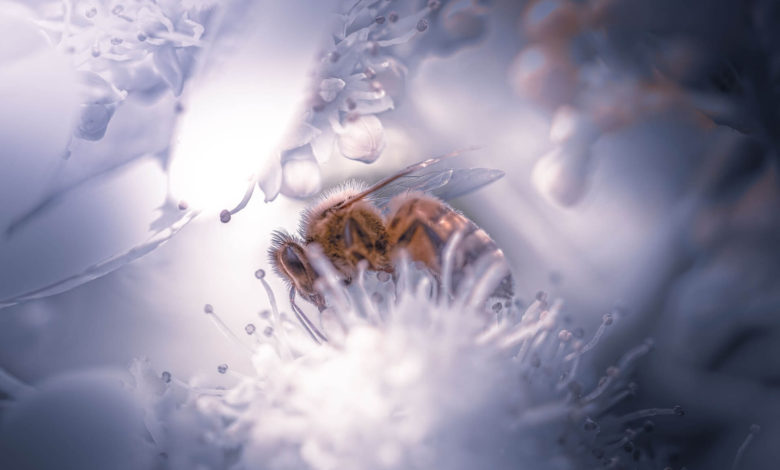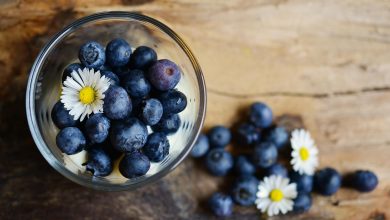Is Bee Venom Useful Against Cancer?

It has been determined that honey bee venom and one of its active compounds, melittin, has strong anti-tumor and anticancer properties. In Europe, honey bees (Apis mellifera) are an invaluable source of medicinal substances, including honey, propolis and poison, which people have used medicinally for thousands of years. And the pain accompanying the bee sting is caused by the bee venom ejected from the bee sting. This article contains information about how bee venom is effective against cancer.
Content of Bee Venom
Bee venom contains amino acids, catecholamines, sugars and minerals, as well as a complex mixture of proteins, enzymes, and polypeptides, while melittin, which is responsible for pain, makes up half of honey bee venom. This amino acid peptide, along with the bee venom it contains, has been found to have strong antitumor and anticancer properties, including the following types of cancer:
- Melanoma
- Non-small cell lung cancer
- Glioblastoma
- Ovarian cancer
- Pancreatic cancer
- Leukemia
- Liver cancer
- Cervical
- Lung cancer
However, little is known about the molecular mechanisms behind the anticancer effects of bee venom. Researchers at the Harry Perkins Medical Research Institute in Australia are leading her research into the particularly aggressive triple negative and HER2 enriched breast cancer subtypes. These studies are associated with limited treatment options and some of the worst outcomes among cancer cases.
Honey Bee Venom Kills Aggressive Breast Cancer Cells
For the study, the researchers used venom of 312 honey bees and bumblebees from Perth, Western Australia, Ireland and the UK and tested it on normal breast cells and cells from clinical breast cancer subtypes. Honey bee venom has turned out to be extremely potent, with certain concentrations causing 100% cancer cell death with only minimal effect on normal cells. What’s more, according to researcher Ciara Duffy, melittin is powerful enough to completely destroy cancer cell membranes within 60 minutes. Melittin-free wasp venom did not cause cell death even at the highest concentrations.
Melittin Inhibits Cancer Signaling Paths
By examining in more detail how melitin acts as an anticancer agent, the researchers investigated its role in cancer signaling pathways that are crucial to the growth and proliferation of cancer cells. Melittin mainly reduced cell proliferation by rapidly interfering with signaling pathways. Melittin also causes pores or holes to form in breast cancer cells, leading researchers to suggest that it can be used with chemotherapy agents to increase their entry into cancer cells.
The combination of melittin and the chemotherapy drug docetaxel reduced tumor growth in a study on mice, and the researchers were able to potentially treat head and neck cancers, which are additional aggressive cancers beyond breast cancer, including lung, glioblastoma, colorectal, stomach, ovarian, endometrial, bladder. It is suggested that it can be used.
While future studies will be needed to determine the best starting method and maximum tolerated doses and to further assess any potential toxicity, researchers suggest that honey bee venom offers a cost-effective, widely available and easily accessible treatment option. It can be used worldwide, including in remote or less developed areas.
Honey Bee Venom Has Multiple Medicinal Uses
Beyond its anti-cancer properties, components of honey bee venom have been used for human health and well-being since ancient times. As stated in Toxins magazine; The therapeutic use of BV [bee venom] dates back to Ancient Egypt (4000 BC) and was later applied by Hippocrates, Aristotle and Galen in Greek and Roman history. In Traditional Chinese Medicine and other historical applications, BV has been introduced for its use for inflammatory diseases such as rheumatoid, arthritis, tendinitis, fibrosis, lupus, and multiple sclerosis.
In more modern times, bee venom has been used to treat heart conditions and degenerative diseases of the nervous system, including multiple sclerosis, Alzheimer’s disease, and Parkinson’s disease. Honey bee venom also has anticoagulation factors and is known to increase blood clotting time, while bee venom acupuncture has been used to control chemotherapy-induced neuropathy. Apamine, another peptide found in bee venom, also has potential medicinal properties and has been investigated as a treatment against Parkinson’s disease, learning disability and diseases involving high muscle excitability, as it is known to reduce neuromuscular transmission.
Moreover, bee venom has a number of known biological and pharmacological activities such as radioprotective, anti-inflammatory, antibacterial and antiviral. Ironically, although bee stings are painful, the venom also has pain relieving effects as well as immunoregulatory activity and anti-rheumatoid arthritis effects. Bee venom and melittin have also been studied to treat inflammatory skin conditions like atopic dermatitis, with a study suggesting that they can make a useful topical treatment for atopic dermatitis, even reducing it further, because they are potent anti-inflammatory associated skin lesions or to promote skin regeneration. It helps.
Bee venom can be useful against drug resistant bacteria, viruses and fungi, including human immunodeficiency virus (HIV), which have antimicrobial activity. According to a review in toxins, it can even provide a resource for combating the drug-resistant disease epidemic: BV and its components in combination with antibiotic drugs are emerging as a reasonable approach to overcoming drug resistance of current antibiotic therapy in a controlled manner.
Why Is It Important To Protect Bees?
Considering that bees provide humans with unique health-enhancing products found nowhere else in nature and act as the main pollinator for growth of at least 30% of the world’s food crops, it is extremely important to protect the surrounding bees. Unfortunately, bees are threatened with exposure to pesticides and other environmental threats. For example, researchers at the University of New Hampshire warn of a dramatic decline in 14 wild bee species required for pollination of apples, blueberries, cranberries and other crops growing in the Northwest.
To avoid harming bees and other beneficial pollinators in gardens, toxic pesticides and turf chemicals should be replaced for non-chemical weed and pest control alternatives. Both flower and vegetable gardens provide good honey bee habitats, and it is also recommended to have a small freshwater pool in the garden or fields for the bees to drink when they are thirsty.





